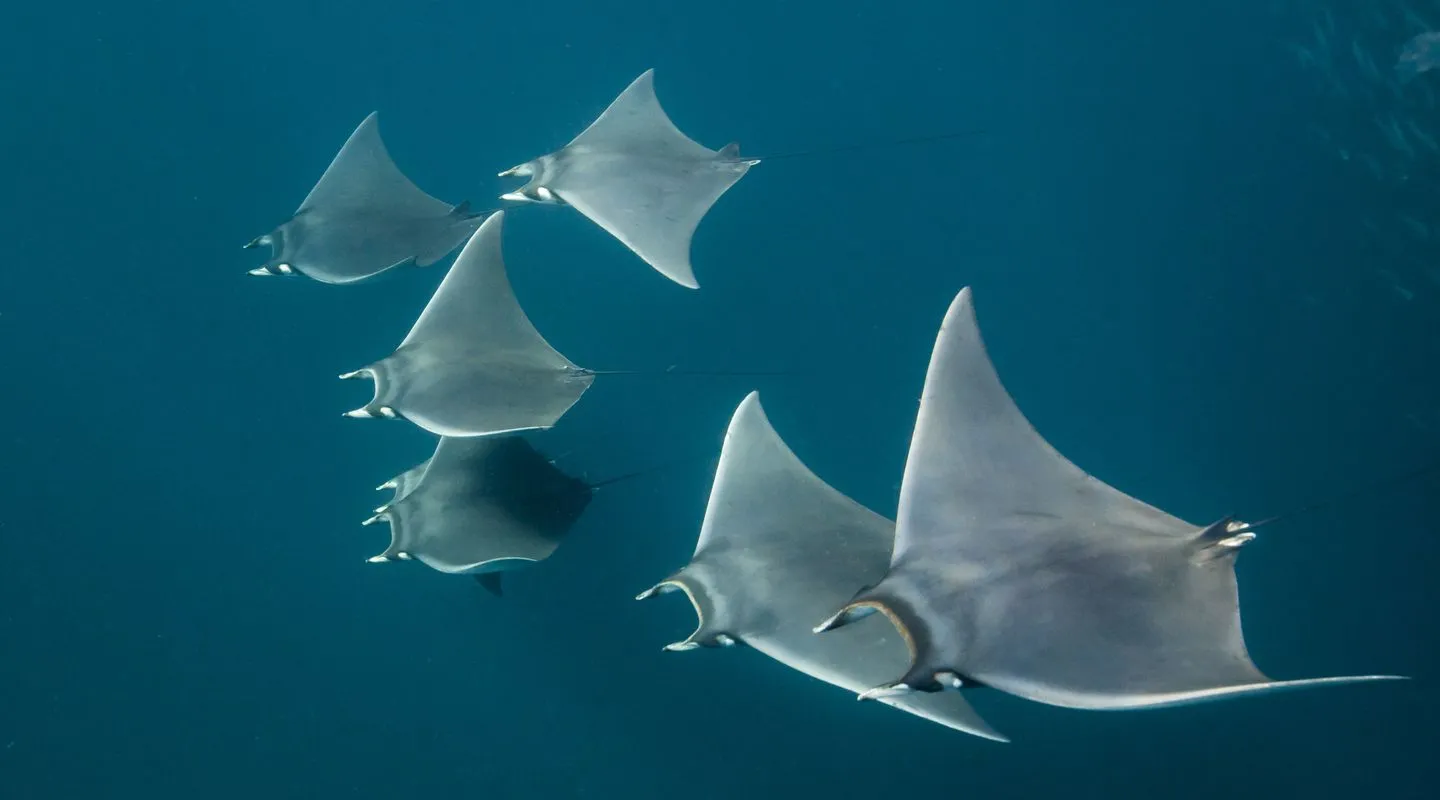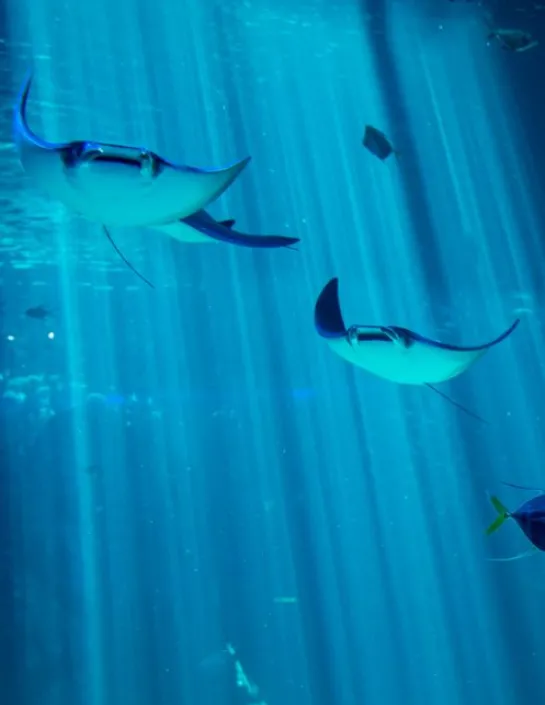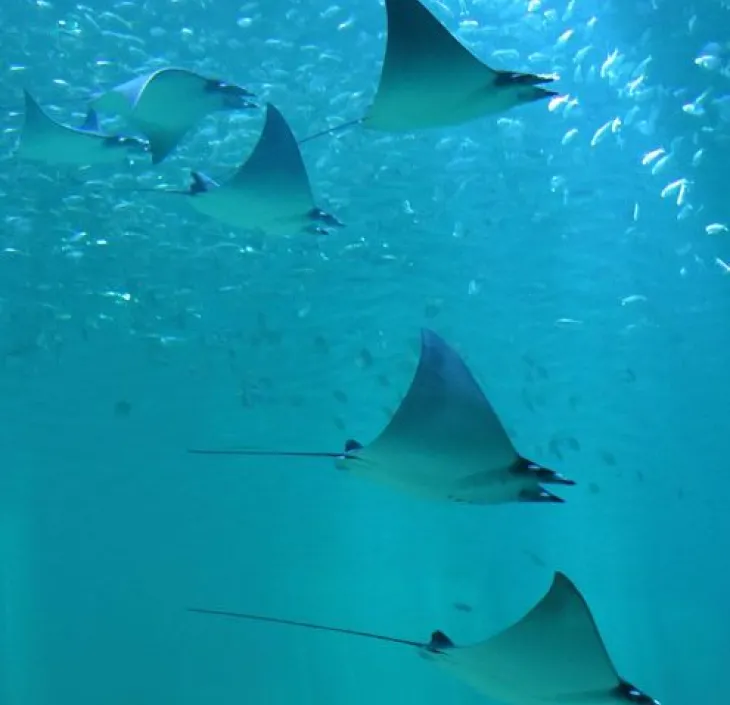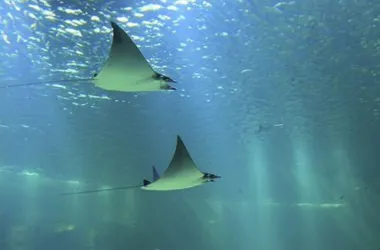Atlantic pygmy devil ray can swim very fast and jump above the surface.
It feeds mainly on tiny planktonic crustaceans (zooplankton) but also feeds on tiny pelagic crustaceans and ray-finned fish.

Rays

Identity card
Appendix II
West Atlantic Ocean.
The Atlantic pygmy devil ray is a species that lives on the high seas.
It has a lifestyle that is pelagic or coastal.
A young Atlantic pygmy devil ray measures on average 55 cm. When fully grown, it can reach up to 1.20 m.
It feeds mainly on tiny crustaceans and ray-finned fish.
Nausicaá is taking part in the EAZA Ex situ program (EEP), dedicated to the Atlantic Pygmy Devil Ray.

At Nausicaá, the Atlantic pygmy devil rays are bottle-fed with krill, directly into their mouths.
Atlantic pygmy devil ray can swim very fast and jump above the surface.
It feeds mainly on tiny planktonic crustaceans (zooplankton) but also feeds on tiny pelagic crustaceans and ray-finned fish.
It is found near the coasts of South America (Brazil, Argentina, Peru and Chile), in the Gulf of Mexico and along the east coast of the United States (New Jersey, North Carolina and Florida).
The Atlantic pygmy devil ray has a lifestyle that is sometimes pelagic, sometimes coastal, which varies depending on the area and the season. It can be seen swimming alone or in small groups of about ten individuals.
The devil mantis Mobula hypostoma has two cephalic fins on either side of its mouth, which it uses to direct plankton towards its mouth. It also has a long, spineless tail. Its dorsal side is black and its ventral side is white.
Some individuals have a dark grey stripe on their dorsal side behind the eyes. When young, the devil mantis measures an average of 55 cm. As an adult, it can reach a maximum length of 1.20 m.
The Atlantic pygmy devil ray is an aplacental viviparous species, i.e. the embryos are not connected to their mother's blood by a placenta. A female gives birth to only one baby per litter.
Long rest periods may explain the prolonged breeding cycles in mobulidae species.
This ray is often caught accidentally. With their low reproductive rate and late sexual maturity, this species is vulnerable. More research on fishing is needed to protect Atlantic pygmy devil ray populations. Trade in this species is regulated (CITES).
JOURNEY ON THE HIGH SEAS

The Ocean Mag
In the spotlight
Poissons, crevettes, requins, les animaux qui se reproduisent ou sont élevés à Nausicaá rejoignent les espaces d'exposition.

Article
Savez-vous combien d’espèces de requins sont à découvrir à Nausicaá ? Apprenons-en plus sur ces animaux fascinants !
Article
Which came first, the egg or the fish? A brief overview of eggs and reproductive strategies in marine animals.